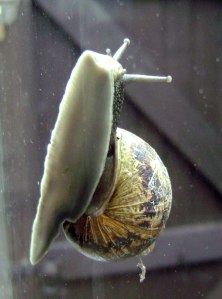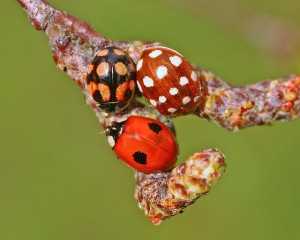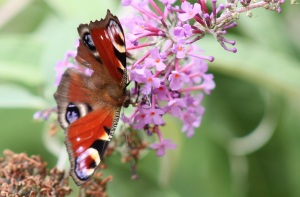For the past few years, I have been sent questions about ‘minibeasts’ (small invertebrates and vertebrates) from a class of four- and five-year-olds. Some questions are simple, some are surprisingly developed. But there are also questions – perfectly innocent questions – that have caused me existential crises. ‘Why do moths die?’ is one of these.
Encouraging inquisitions about the natural world is imperative. Batting away a child’s question can be harmful: Leather and Quicke (2010) highlighted that a lack of natural history comprehension may threaten the future of our environment. Misunderstandings could result in a lack of interest and appreciation, diverting students from a very rewarding area of study. Fortunately, help is at hand: teachers can rely on a wealth of minibeast resources; outreach events and educational roadshows, such as Minibeast Mayhem, are a brilliant way to help reconnect young people with the environment; and plenty of apps and citizen science projects are available.
Below are the latest questions from the class. Post a comment if you want to expand on these ideas, or have some resources to share.
Q. How many spots does a ladybird have?
Different types of ladybirds have different numbers of spots. Some have as many as 24, while others have none. The two- and seven-spotted ladybirds are among the most common in the UK. Sometimes the spots can look more like rectangles than circles (see the image below). Bright colours and spots are a warning to other animals that ladybirds do not taste very nice.
Q. How do snails move?
Snails and slugs have lots of muscles on their undersides. They can creep slowly forward by squeezing and relaxing these muscles all the way down the length of their bodies. Slime can help them stick to the surface they’re moving across, even allowing them to go up walls (or windows, like in the picture below).

This snail is climbing up a window and you can see the underside of its body through the glass (CC BY-NC-ND Flickr user *Nom & Malc)
Q. How many legs does a caterpillar have?
Caterpillars have two types of legs: jointed legs, which are used to hold onto food, and prolegs, which are used for walking and climbing. All caterpillars have three pairs of jointed legs at their front end, and can have up to five pairs of prolegs behind them. This means caterpillars can have a total of 16 legs. Some caterpillars also have a clasper on the end of their bodies, which is also used to help to cling on to things.

You can see three of the jointed legs near the head (top-right) and a close-up of the prolegs is shown in the box (CC BY-SA Didier Descouen via Wikimedia Commons)
Q. Why do butterflies fly?
Flying is a very useful skill for lots of reasons. Flying helps butterflies to quickly and easily travel between flowers to get their food. Flying can also allow butterflies to escape from other animals that want to eat them. Some butterflies migrate, which means that they fly very long distances to find new homes or food.
Q. How does a butterfly eat?
Butterflies have a special mouth called a proboscis (pronounced pro-bos-kiss or pro-boss-iss). It is long and thin and is coiled up like a party blower when it is not being used (see the picture below). When hungry, butterflies unroll their mouth and and use like a long straw to suck up nectar, a sugary drink, from flowers

Close-up of a butterfly’s head, showing its coiled-up mouth (Public domain via Dartmouth Electron Microscope Facility)
Q. How does a dragonfly eat?
Dragonflies eat other minibeasts, such as flies, which they spot using their huge eyes (see the picture below). Dragonflies are excellent at flying and can easily catch their prey in the air. Once caught, they eat their food using powerful chewing mouthparts.

The dragonfly’s big eyes cover most of its head, like a helmet, and help it to spot its prey (CC BY-SA Marie Brochu via Wikimedia Commons)
Q. Why is an ant so strong?
Some ants can lift 100 times their own body weight. They can do this because they have very thick muscles compared to the size and weight of their bodies. They also have very strong jaws to grip the thing they are moving. Ants need to be strong so that they can carry food, such as leaves (see the picture below), back to their nest.
Q. How do spiders move? and Why does a spider have eight legs?
Spiders can move in lots of different ways: walking, running, jumping and even swimming. Like us, they have muscles to help them move their legs, but can also pump their blood in and out of their legs to help straighten and bend them. Spiders can use silk to help them dangle down, and can even hold a silk thread in the air like a kite and can get carried away by the wind. Having eight legs can make moving much easier and allows spiders to do several things at once, such as walking and building a web.

Eight legs can be seen on this orb-weaver spider, and two small mouthparts called pedipalps near its mouth in the middle of the picture (CC BY-NC fir0002 (Flagstaffotos) via Wikimedia Commons)
Q. Will there be more or less fleas this summer as it has rained so much?
Fleas like it when the winter has been damp, but not very cold, and when the summer is warm, but not too hot. These are excellent conditions for young fleas to grow up in. Since the winter has not been particularly cold, but has been very damp, we could see more fleas this year. If the cold weather continues, we may not see that much of a difference compared to other years.
Q. Why do moths like lights?
No-one is certain why moths like lights. We do know that moths use the light from the moon to work out which direction they should be going. Sometimes, they might confuse a lightbulb or candle for the moon, and end up flying around it. It might be a good idea to turn off your lights at night to stop this from happening.
Q. Why do moths die?
Moths can die for a number of reasons. Sometimes they run out of food, or get old and exhausted. Moths are also food for lots of different types of animals, like bats and owls. Moths lay lots of eggs to make sure that there are lots more moths to replace them after they die.

Moths are eaten by other animals that come out at night (nocturnal animals), like bats (Public domain, USGov via Wikipedia)
Update from the class: “Thank you for the answers to our questions. We are very excited to think that we are also a little bit famous being featured on your blog. We will now all be turning our lights off at night as we don’t want to confuse any moths!!”
This post is in memory of Dr Mark Jervis, a senior lecturer at Cardiff University, who passed away on 12th March 2014. Mark’s interest in entomology and the history of science made for some very engaging conversations. A great character.






Some interesting facts there, however i know why moths are attracted to lights, the fact is they arent, they are attracted to darkness & the darkest point is directly behind the light, or lets say just above the bulb they see it and try to get to that pitch darkness but obviously cant and just bump around the light. But I dont know why.
Then why do they constantly fly onto my screen when I’m working at night? They could just fly behind it, but they don’t.
Last night I had four of the little buggers, took me ages to safely put them outside. I haven’t killed an insect in over 30 years, or any animal for that matter. Humans? Different story.
Oops. Not that I’ve killed anyone. I realise how that would read lol.
Yes, it appears they are drawn toward the light specifically; not around it. It’s especially difficult to keep them out when you need your windows open during the summer months. (And thanks for confirming you haven’t been killing humans!)
Nocturnal moths are, by definition, active in the darkness. They aren’t necessarily attracted to light, but likely use it to navigate. Here’s a bit more information: http://www.livescience.com/33156-moths-drawn-artificial-lights.html
Wonderful, what a webpage it is! This blog presents valuable facts to us, keep it
up.
Pingback: Answering minibeast questions with the help of Twitter | The Rostrum·
Why do moths die so fast